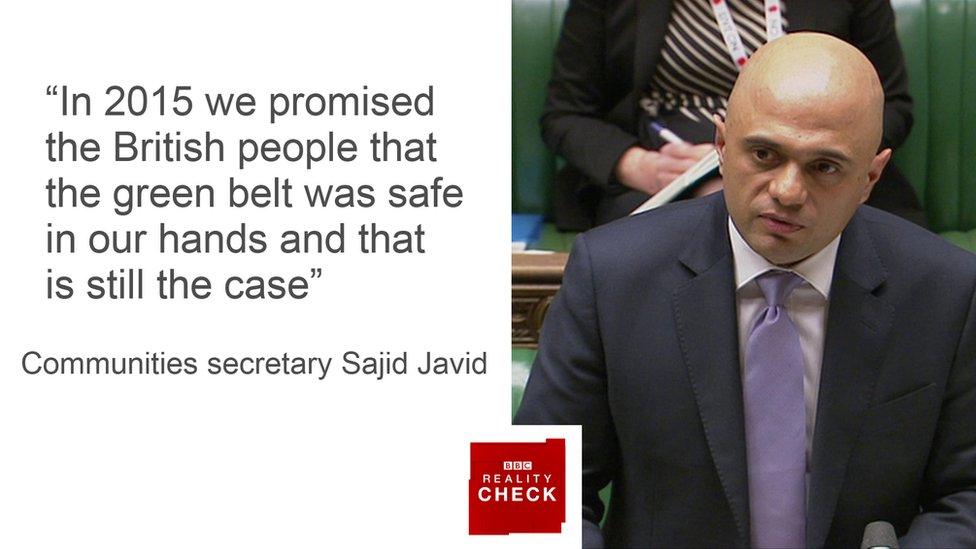Reality Check: Will it be easier to build on green belt?
- Published

The claim: The green belt is safe from an increase in development.
Reality Check verdict: The rules for developing green belt previously said that it was allowed only in exceptional circumstances. The government has now specified what would count as exceptional circumstances. It is not clear whether the new rules will be more or less strict than just letting councils decide what counted as exceptional circumstances.
The government has described the housing market as broken, promised more affordable homes and said it would help people to buy and rent.
A big question in discussions of increasing the supply of homes is whether planning regulations will be changed to make it easier to build on green belt land.
Green belts were introduced after World War Two to stop cities from sprawling and countryside being spoilt. About 13% of England is now covered.
This covers scenic sites open to the public, such as the Chiltern Hills and North Downs, but it also covers a lot of land that has limited public access and may not be particularly beautiful.
In the House of Commons, Communities Secretary Sajid Javid said: "In 2015, we promised the British people that the green belt was safe in our hands and that is still the case."
So what has changed?
There has been little variation in the amount of green belt land since 1997, although data is not available for every year.
The Housing White Paper, external says the current planning regulations allow building on the green belt only "in exceptional circumstances" but that there is no detail given of what would amount to exceptional circumstances.
The government has now specified that before allowing development on green belt land, councils would need to rule out options including:
using brown field sites or estate regeneration
using land that is currently underused, including surplus public sector land
other authorities helping to provide land for development
The White Paper also says that councils allowing the boundaries of green belt land to be changed would have to make up for it by improving other bits of green belt.
It also asks for suggestions of other things councils should take into account before doing so.



- Published7 February 2017
